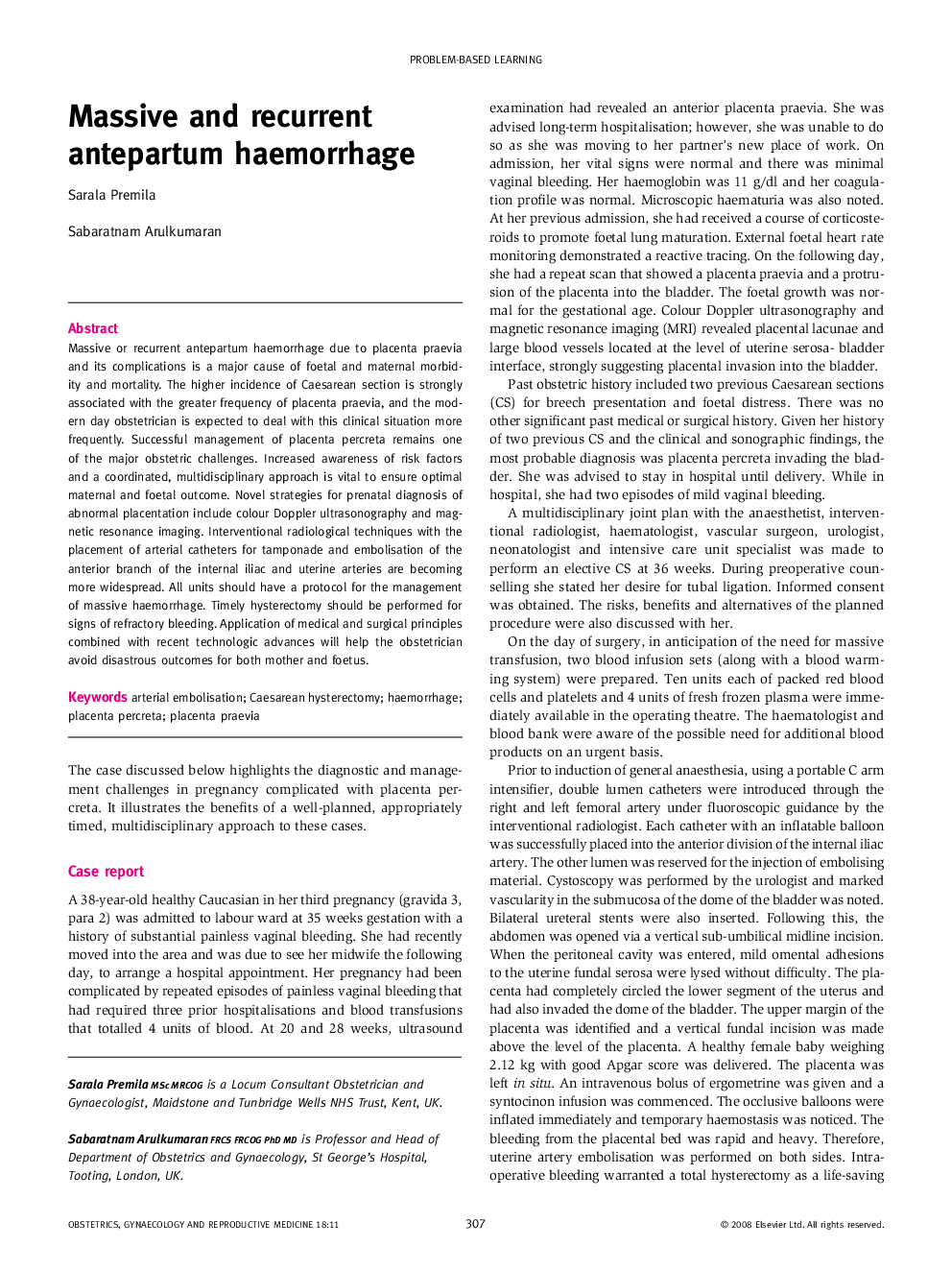| Article ID | Journal | Published Year | Pages | File Type |
|---|---|---|---|---|
| 3967505 | Obstetrics, Gynaecology & Reproductive Medicine | 2008 | 5 Pages |
Abstract
Massive or recurrent antepartum haemorrhage due to placenta praevia and its complications is a major cause of foetal and maternal morbidity and mortality. The higher incidence of Caesarean section is strongly associated with the greater frequency of placenta praevia, and the modern day obstetrician is expected to deal with this clinical situation more frequently. Successful management of placenta percreta remains one of the major obstetric challenges. Increased awareness of risk factors and a coordinated, multidisciplinary approach is vital to ensure optimal maternal and foetal outcome. Novel strategies for prenatal diagnosis of abnormal placentation include colour Doppler ultrasonography and magnetic resonance imaging. Interventional radiological techniques with the placement of arterial catheters for tamponade and embolisation of the anterior branch of the internal iliac and uterine arteries are becoming more widespread. All units should have a protocol for the management of massive haemorrhage. Timely hysterectomy should be performed for signs of refractory bleeding. Application of medical and surgical principles combined with recent technologic advances will help the obstetrician avoid disastrous outcomes for both mother and foetus.
Related Topics
Health Sciences
Medicine and Dentistry
Obstetrics, Gynecology and Women's Health
Authors
Sarala Premila, Sabaratnam Arulkumaran,
